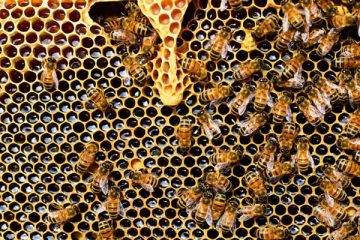Japan is quietly emerging as a global trendsetter in pop culture, as well as in green technology and environmental practices.
By Amelia Newcomb | Staff writer of The Christian Science Monitor
TOKYO – Just two decades ago, Japan’s image in the world was of an economic juggernaut, challenging America and other industrialized nations with its push for dominance in everything from microchips to supercomputers. Discussion of Japanese culture typically referenced the traditional and offbeat worlds of, say, Kabuki or sumo.
Today, Japan sets the trends in what’s cool. Sarah Palin’s famous glasses came from a Japanese designer. Tokyo has the most Michelin-starred restaurants in the world, with eight of them earning three stars. Even America’s favorite food show, “Iron Chef,” is a Japanese import. Japanese women are pushing the limits of literary pop culture with blogs and cellphone novels. Japanese comics occupy ever-greater shelf space in bookstores, and animé-influenced movies like the “The Dark Knight” and “Spider-Man 3” find huge audiences in the West.
What all these media share is a nuanced Japanese aesthetic that has infiltrated global sensibilities – a sort of new “soft power” for Japan. In the process, they’re challenging delineations of good and evil from the world’s main purveyor of pop culture, Hollywood, as well as American ideals of the lone action-hero.
“The American 20th-century ideal of the individual superhero is wearing thin,” says Roland Kelts, professor at the University of Tokyo and author of “Japanamerica: How Japanese Pop Culture Has Invaded the U.S.” “The Japanese model is of self-denial and the sublimation of selfish desires for the sake of group harmony. This is becoming a multipolar world. The desire to be a part of something harmonious rather than the leader of a pack is growing.”
Most weekdays, manga creators Shin Kibayashi and his sister, Yuko, can be found sitting elbow to elbow in their modest studio in a stylish section of Tokyo. She types dialogue while he comments. She does the same as he sketches. They switch roles – effortlessly – as the spirit moves them.
The world they work in is not one of American-style comic strips. Their serial cartoons – which are regularly bound into large volumes – follow sophisticated characters and plots over long periods of time, much like a soap opera.
The team’s work spans the spectrum, from the Kindaichi Case Files, a detective series aimed at boys to the soccer manga Shoot! to The Drops of the Gods, a series for adults that focuses on wine and is read weekly by 500,000 Japanese. In France and Korea, the series is so popular that sales of wine brands mentioned in the comic often spike.
Shin says he’s noticed a dramatic rise in interest in their work. “It took a long time, but manga’s role has developed citizenship everywhere,” he says.
In France last year, for example, 1,787 foreign comic books were translated – 64 percent of them Japanese. In the US, total manga sales in 2007 rose about 5 percent, to more than $210 million, according to ICV2.com, a trade website. Otakon, a convention devoted to Japanese pop culture in Baltimore, saw a record-breaking 26,000-plus attendees this past summer.
Shin says a plus for manga is the latitude they give the reader. “A significant characteristic is that there’s not good and bad only,” he says as he and Yuko sit in the entertainment room of his airy European-style home.
Daily life has many areas of gray, the two artists say – and it’s encumbent upon them to explore them. That approach applies to young people as well, though they emphasize their sensitivity to young readers’ impressionability.
Shin notes that TV, for example, would skirt showing drug use. But in manga, “I will show it, while at the same time making it clear that something must or could be done,” he says. “Manga is an experimental medium, so you can explore how to influence boys not to do drugs.”
“To readers, the manga’s world is more real than Hollywood movies,” Yuko adds. “In spite of the fact that the story is fantasy, the way characters [behave] in manga is more realistic.”
Shin says that 50 years ago, people had much sharper delineations of who was good and who was evil in the world. “Now the world has changed. Nobody is sure who is good or who is evil…. The whole world is becoming borderless and unstable. The manga world’s ambiguity has become realistic.”
That sense of familiarity and ambiguity is key. “There’s nothing casual about this form,” says Gonzalo Ferreyra, a vice president at VIZ Media, the largest US importer of manga and anime. In the past five years, he says, the company has seen high double-digit increases in sales. “These are stories that … can sustain interest for several dozen volumes.”
Indeed, many readers commit to manga over decades. Suzue Miuchi, who is relaunching one of Japan’s longest-running girls’ manga, Glass Mask, points to letters from fans who say they have overcome weakness by tracking the life of Maya, an actress whose strong will to live helps her overcome seemingly insurmountable obstacles.
“I have always felt that I give readers many things,” says Ms. Miuchi, whose gentle demeanor belies an intense schedule of sleeping part of the day and working through the night on the series, which has run for more than 30 years. “But I am not asking them to take a certain message. You can take away what you want.”
That’s part of the appeal. “It’s nice to be reminded that there’s no one way of looking at, or surviving in, or laughing at, the world, but we all must, in the end, manage these things,” Mr. Ferreyra says.
In true Japanese style, the point is made without fanfare. “I always feel like US culture bashes down doors, while Japanese culture seeps in under the door,” says Bruce Rutledge, publisher of Chin Music Press in Seattle.
He points to cartoons that kids watch, but don’t specifically associate with Japan. Or take sushi: “It went from being ‘Gross! Raw fish!’ to the food of beautiful people,” he says. Japanese culture became all the rage, he adds, because “it was exotic, but it made sense or it entertained us, or both.”
That point is not lost on the Japanese government, which sees the “soft power” possibilities of the country’s artistic prowess. Its consular websites tout manga and animé. Government brochures share information via manga-style booklets. And Prime Minister Taro Aso is perhaps the first leader of a major nation to trumpet his credentials as a comic-book geek, though to limited success.
This year, Japan awarded its second International Manga Award to a Hong Kong artist – who beat out submissions from 46 countries, including Indonesia, Russia, Brazil, Britain, Saudi Arabia, and Spain.
“To improve your image in the world, you have to make use of all the tools available,” says Kenjiro Monji, Japan’s former ambassador to Iraq who recently became director general of public diplomacy, a post that was established three years ago. He is quick to note that pop culture doesn’t need government’s promotional hand. But, he says, he can play a role as Japan takes note of a three-fold increase since 1990 – to 3 million – in those studying Japanese. The number of Americans studying in Japan rose 13 percent between 2005 and 2007, according to the New-York based Institute of International Education. “We can use the attractive power of popular culture as an introduction,” says Mr. Monji.
•Amelia Newcomb reported from Japan as a fellow with the International Reporting Project.
Courtesy: csmonitor.com



















